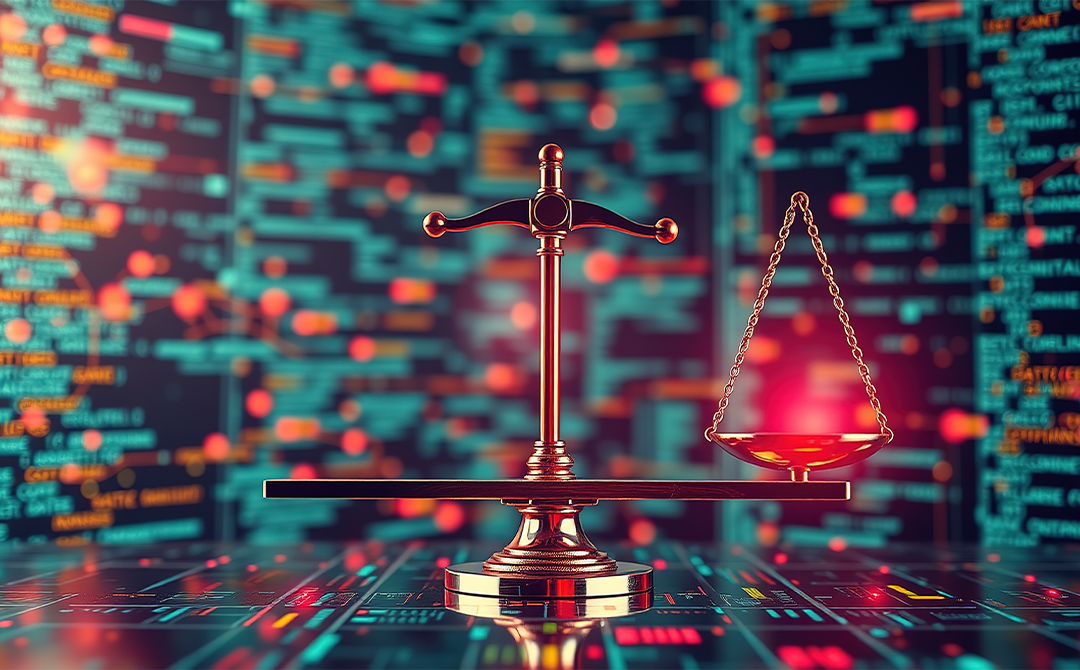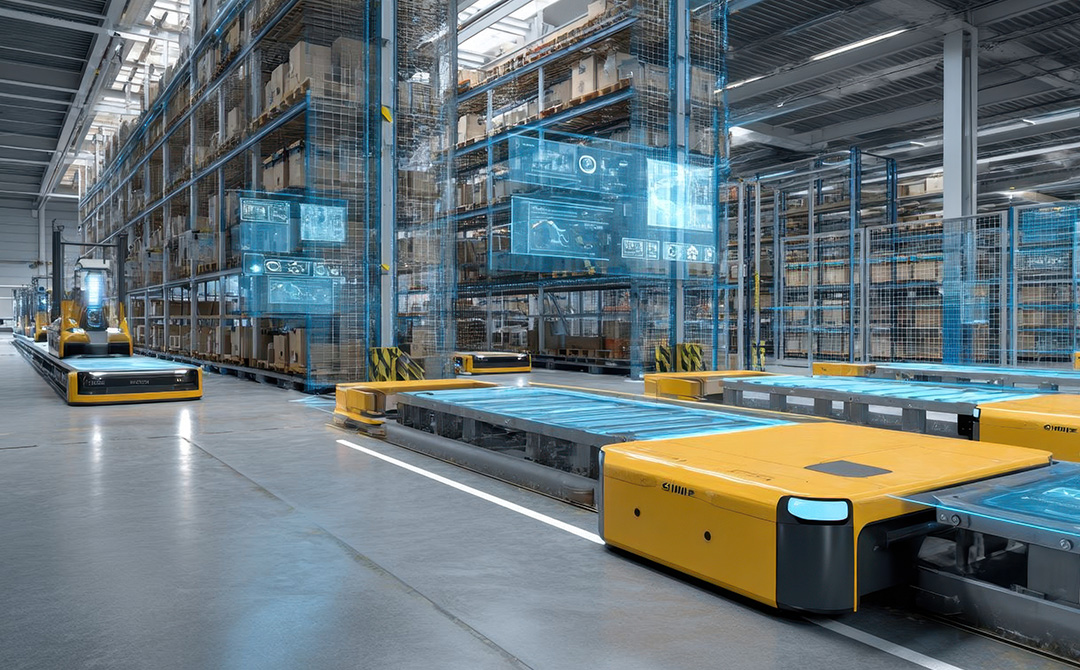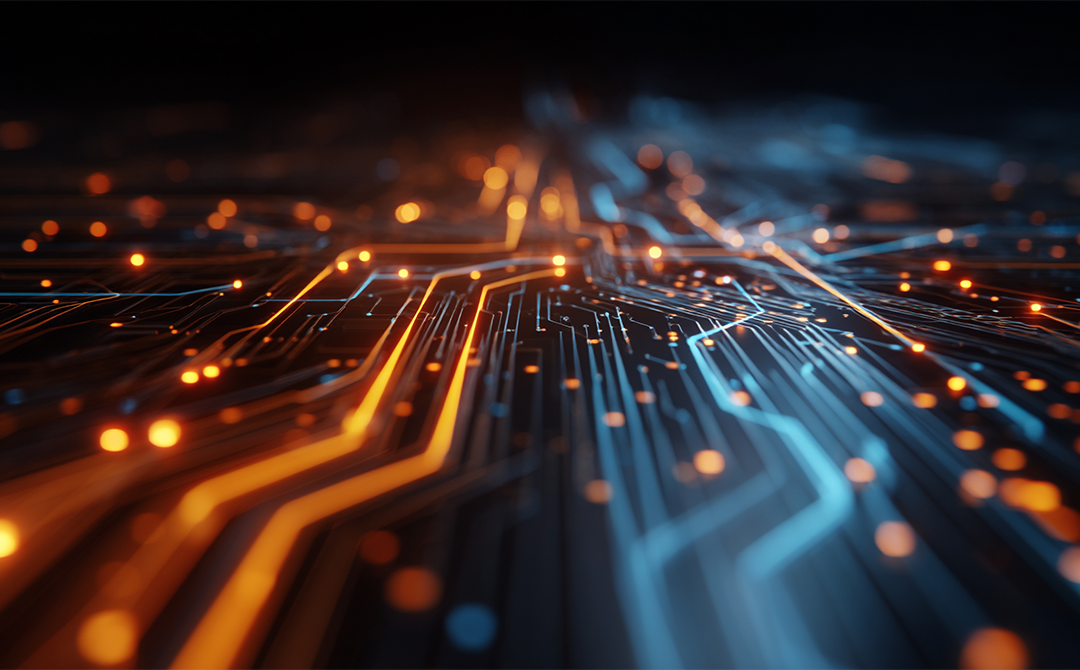
In 2024, a University of Washington (UIM) study revealed that AI-powered résumé screening tools favored white-associated names 85% of the time. Black male-associated names were never preferred over their white counterparts. This stark example underscores the persistent issue of AI bias, where algorithms trained on historical data can perpetuate and even amplify existing societal prejudices. (Source: UIM)
As artificial intelligence becomes increasingly integrated into critical decision-making processes from hiring and lending to healthcare and law enforcement, the implications of biased algorithms grow more profound. Understanding the roots of AI bias, recognizing its manifestations, and exploring strategies to mitigate its impact is essential.
This article explores what AI bias is, the common ways it surfaces, and how organizations can address these challenges without sacrificing AI's immense benefits.
What is AI Bias?
AI bias (or bias in artificial intelligence) occurs when an AI system produces systematically skewed or unfair outcomes due to flawed training data, algorithmic design, or inherent societal prejudices embedded in the data.
AI models learn patterns from historical or real-world data. If this data underrepresents certain groups, contains discriminatory language, or reflects existing societal biases, the AI may replicate—or even amplify—those biases in its decisions. For example, a hiring algorithm trained on past resumes might favor male candidates if historical hiring data was male-dominated.
The consequences of AI bias are far-reaching: it can perpetuate stereotypes, undermine trust in AI systems, and expose organizations to ethical, reputational, and legal risks
Key Drivers of AI Bias
- Data Quality: AI systems rely on the data they are provided. The models skew their predictions if the data lacks diversity or contains ingrained prejudices.
- Algorithmic Design: How developers frame the problem and select features for machine learning can inadvertently introduce bias.
- Lack of Oversight: From limited audits to inadequate testing, insufficient scrutiny at various development stages can allow bias to slip through undetected.
By understanding the AI bias definition and its origins, we take the first critical step toward creating more equitable AI solutions.
Types of AI Bias
Bias can enter AI systems through data, model design, or external societal influences. Understanding each category allows you to identify potential pitfalls early and mitigate them before they affect real-world outcomes.
Common types of bias in AI include:
1. Sampling Bias
If your training dataset does not adequately represent all user groups, certain populations may be underrepresented. As a result, the AI model might perform poorly or unpredictably when dealing with these groups.
For instance, a speech-recognition system trained predominantly on voices with a particular accent may struggle with other accents, thus creating uneven user experiences.
2. Measurement Bias
Measurement bias arises when the data you collect fails to capture the nuances of what you intend to measure. For instance, an e-commerce recommendation engine tracks ‘clicks’ as a metric for customer interest. It may overlook meaningful engagement factors such as time spent reading product details or comparing reviews.
3. Algorithmic Bias
Sometimes, the algorithm design can exacerbate skewed outcomes. Certain Machine Learning (ML) methods may favor patterns that reinforce historical inequities.
For instance, a recruiting tool could rank candidates based on criteria that strongly correlate with one demographic group, resulting in bias and discrimination in the AI's output.
4. Confirmation Bias
Developers or data scientists might unintentionally choose and input data into the model that reinforces their own preconceived notions. If conflicting signals or data points that challenge those assumptions are overlooked, this can introduce bias into the system.
5. Reinforcement Bias
The outputs of a model can also influence future data collection. Assume that an AI-lending platform repeatedly denies loans to certain demographics based on flawed criteria. This particular bias would be fed back into the system as “correct” prediction, perpetuating and intensifying discrimination.
Real-world Implications
Each of these bias types can manifest in everyday scenarios, from healthcare tools misdiagnosing patients of certain ethnicities to HR systems that inadvertently screen out qualified applicants for no justifiable reason.
Bias in AI undermines user trust and can raise ethical and legal concerns for organizations. Given these categories, it becomes clear that bias in AI systems is a multidimensional issue.
Unexpected Benefits of AI Bias
At first glance, the idea of finding a benefit in AI bias seems counterintuitive. After all, bias in AI systems can lead to unfair treatment, reputational damage, and even legal risks. However, recognizing and confronting bias in AI systems early can offer surprising advantages that ultimately lead to stronger, more ethical AI development. Here’s how:
1. Highlights Data Weaknesses and Gaps
When bias surfaces in an AI model, it often points directly to flaws in the underlying data. This helps organizations identify missing, incomplete, or skewed datasets, allowing them to fix issues before deploying solutions on a large scale. Without examples of AI bias to study, many critical data flaws would remain hidden.
2. Drives Better Model Auditing and Governance
The presence of bias forces companies to strengthen their AI governance practices. Establishing bias detection protocols, explainability standards, and fairness audits becomes non-negotiable, improving the overall quality and trustworthiness of AI outputs.
3. Sparks Innovation in Ethical AI Solutions
Facing bias challenges has accelerated research into new tools, such as IBM’s AI Fairness 360, and fairness-driven modeling techniques. This fuels innovation in areas such as bias mitigation, ethical AI modeling, and responsible AI deployment, ensuring AI becomes more inclusive over time.
4. Raises Awareness About Ethical AI
Public examples of AI being biased, such as biased hiring tools or racially insensitive facial recognition, have elevated the conversation around responsible AI. This awareness helps foster greater accountability among AI developers, business leaders, and regulators alike.
In essence, while AI bias poses serious challenges, it also helps catalyze the development of better, fairer, and more transparent AI systems when handled responsibly.
How to Avoid AI Bias
As AI systems continue to drive critical decisions across industries, ensuring fairness and transparency becomes non-negotiable. Eliminating AI bias might be unrealistic, but businesses can significantly reduce it by adopting targeted strategies. Here's how organizations can actively work to avoid AI bias and foster more ethical AI development:
1. Build Diverse and Inclusive Datasets
One of the leading causes of bias in AI systems stems from training models on non-representative datasets. To mitigate this:
- Gather data from a wide range of demographic groups and geographic regions.
- Regularly update training datasets to reflect changing social patterns.
- Audit datasets for gaps or overrepresentation of specific groups.
2. Implement Fairness-Aware Algorithms
Many AI frameworks today offer built-in fairness tools that can be applied during model training and evaluation. These algorithms:
- Rebalance skewed datasets.
- Adjust model outcomes to reduce disparate impact.
- Offer multiple fairness metrics to monitor and optimize performance.
Using such tools minimizes the risk of bias types in AI from propagating through decision systems.
3. Conduct Regular Bias and Fairness Audits
Bias is not a one-time problem, it can emerge as systems learn and adapt over time. Businesses should:
- Schedule recurring audits using tools like IBM’s AI Fairness 360 or Google's What-If Tool.
- Test AI models in real-world environments with diverse test cases.
- Monitor outputs for signs of bias and discrimination in AI practices.
4. Foster a Culture of Responsible AI Development
Avoiding bias is as much about people as it is about technology. Organizations should:
- Train AI teams on ethical development principles.
- Encourage cross-functional collaboration between data scientists, ethicists, domain experts, and business leaders.
- Establish clear ethical guidelines for every stage of AI model development.
5. Use Explainable AI (XAI) for Transparency
Ensuring that AI decisions are understandable to non-technical stakeholders is critical. With explainable AI:
- Users can see why a model made a particular prediction.
- Teams can detect biased logic earlier and intervene if necessary.
- Trust in AI systems increases significantly.
By adopting these practices, companies can effectively minimize AI bias while still harnessing the power of AI to drive innovation and make better decisions. Next, we will explore some real-world applications and use cases of AI bias to understand how bias manifests across different industries and how companies are addressing it.
Applications of AI Bias
AI bias doesn’t just exist in theory, it has real-world implications that affect industries, consumers, and societies in profound ways. From hiring practices to healthcare diagnostics, bias in AI systems can impact decisions with lasting consequences. Let’s take a closer look at some of the key applications and use cases where AI bias has surfaced:
1. Hiring and Recruitment Tools
Many companies use AI-powered platforms to screen résumés and recommend candidates. However, biased training data, such as historical hiring patterns that favor a certain gender or ethnicity, can lead to AI systems being biased against underrepresented groups.
- Example: Amazon’s now-shelved recruitment tool that penalized applications containing the word “women.”
- Impact: Qualified candidates could be systematically excluded from job opportunities without human reviewers even being aware of it.
2. Lending and Credit Scoring
Financial institutions increasingly rely on AI models to assess creditworthiness. If training data disproportionately penalizes certain demographics based on zip code, education history, or past loan data, bias and discrimination in AI can result.
- Example: Studies have shown that some AI credit algorithms issue lower scores to minority applicants, despite having similar financial profiles.
- Impact: Discriminatory lending practices could deepen financial inequality.
3. Healthcare Diagnostics and Treatment
AI algorithms are revolutionizing diagnosis and treatment recommendations. However, if training datasets underrepresent certain races, genders, or age groups, diagnosis accuracy may vary dramatically across populations.
- Example: Some AI models have been found less accurate in diagnosing conditions like skin cancer on darker skin tones.
- Impact: Misdiagnosis can worsen health disparities and erode trust in healthcare AI systems.
4. Law Enforcement and Predictive Policing
Predictive policing tools aim to forecast criminal activity based on historical crime data. However, biased data reflecting systemic inequalities can perpetuate unfair targeting of specific communities.
- Example: AI systems disproportionately flag minority neighborhoods for increased police presence.
- Impact: Reinforces cycles of over-policing and mistrust in law enforcement.
5. Facial Recognition and Surveillance
Facial recognition algorithms have shown higher error rates when identifying women and people of color compared to white males.
- Example: Studies (e.g., MIT Media Lab) have shown that facial recognition tools misidentify darker-skinned individuals at rates far higher than those of lighter-skinned individuals.
- Impact: Potential misuse in security, public spaces, and identity verification processes.
These applications and use cases of AI bias illustrate why detecting and mitigating bias is essential, not only to uphold ethical standards but also to ensure that AI technologies serve everyone equitably.
Examples of AI Bias
Understanding real-world examples of AI bias brings clarity to how even the most sophisticated systems can produce unintended and sometimes harmful outcomes. Here are some striking cases that reveal the hidden dangers of unchecked bias in AI systems:
1. Amazon’s Gender-Biased Hiring Algorithm
In 2018, Amazon discontinued its experimental AI recruiting tool after discovering that it systematically downgraded applications containing the word “women.” The system was trained on historical hiring data that reflected male dominance in tech roles, reinforcing gender bias. (Source: Amazon)
Lesson: AI systems can inherit and amplify historical inequalities if not carefully designed and monitored.
2. Apple Card’s Gender Discrimination in Credit Limits
Several users, including a prominent tech entrepreneur, noted that Apple’s AI-driven credit card application system offered significantly lower credit limits to women compared to men, even when they had similar assets. Investigations revealed potential bias and discrimination in AI scoring algorithms. (Source: Apple)
Lesson: Without transparency and fairness audits, financial AI models risk violating anti-discrimination laws.
3. COMPAS Algorithm in Criminal Justice
The COMPAS system, used across U.S. courts to predict recidivism risk, was found to falsely flag Black defendants as high risk more often than white defendants. A study by ProPublica revealed severe racial bias embedded in the predictive policing model. (Source: Compas)
Lesson: Relying solely on historical crime data can perpetuate systemic bias in critical areas, such as law enforcement.
4. Google Photos Misclassification Error
In 2015, Google’s photo-tagging AI infamously mislabeled Black individuals as “gorillas.” This offensive error stemmed from inadequate diversity in the training datasets and insufficient post-training evaluation. (Source: Google)
Lesson: Data diversity and rigorous post-deployment testing are crucial to prevent devastating public backlash.
5. Healthcare Algorithm Bias in Risk Assessment
A major healthcare risk prediction algorithm used by hospitals was found to underestimate the health risks of black patients compared to white patients with similar medical conditions. The algorithm used healthcare costs as a proxy for medical needs, inadvertently encoding racial bias. (Source: Healthcare)
Lesson: Poorly chosen proxies in model design can introduce unintended and unethical biases.
Turning the Challenge of AI Bias Into an Opportunity
Artificial intelligence holds immense potential to drive innovation, streamline operations, and improve lives. Yet, without active efforts to recognize and address AI bias, this potential can be compromised, leading to unequal outcomes and damaged trust.
By prioritizing diverse datasets, incorporating fairness-driven algorithms, conducting regular audits, and cultivating a culture of ethical AI development, businesses can ensure that their AI systems are not only powerful but also fair and responsible. Recognizing bias is not a sign of failure, it’s a crucial step toward building smarter, more inclusive technologies that serve everyone equitably.
Organizations that take proactive steps today will not only mitigate risks but also position themselves as leaders in the era of ethical AI.
At Tredence, we help businesses navigate the complexities of AI development with a strong focus on fairness, transparency, and impact. Partner with us to build AI solutions that drive innovation, without compromising on ethics.
FAQs
1. Why is it wrong to have biases in AI?
Bias in AI leads to unfair outcomes, reinforcing stereotypes and discrimination. It can result in unethical decision-making in critical areas such as hiring, lending, and law enforcement. By mitigating AI bias, businesses ensure fairness, legal compliance, and trust in AI systems.
2. How does AI bias affect real-world decisions like hiring, lending, and policing?
AI bias in hiring tools can unintentionally filter out qualified candidates based on gender, ethnicity, or background. In financial services, biased AI can deny loans to specific demographics due to historical disparities.
In law enforcement, biased AI-based facial recognition has led to wrongful arrests and racial profiling. These examples demonstrate how AI biases carry significant social and ethical consequences.
3. Is AI bias always intentional, or can it happen without human interference?
AI bias is often unintentional and stems from biased training data or flawed algorithmic design. AI models learn from historical datasets, which may contain systemic inequalities. AI bias can emerge naturally if data is not carefully curated and tested for fairness.

AUTHOR - FOLLOW
Editorial Team
Tredence
Next Topic
Supply Chain Crisis Management: Strategies, Systems, and Real-World Resilience
Next Topic




